|
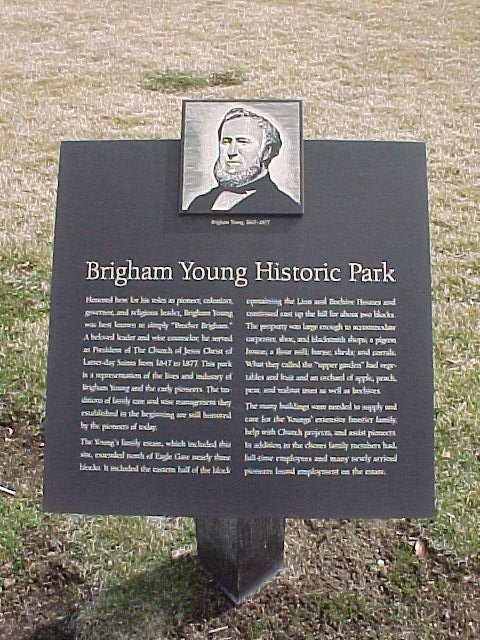 Brigham Young, 1801-1877 Brigham Young, 1801-1877
Brigham Young Historic Park
"Honored here for his roles as pioneer, colonizer, governor, and
religious leader. Brigham Young was best known as simply "Brother
Brigham." A beloved leader and wise counselor, he served as President of
the Church of Jesus Christ of Latter-day Saints from 1847 to 1877. This
park is a representation of the lives and industry of Brigham Young and
the early pioneers. The traditions of family care and wise management
they established in the beginning are still honored by the pioneers of
today.
"The Young family estate, which included this site, extended north of
Eagle Gate nearly three blocks. It included the eastern half of the
block containing the Lion and Beehive Houses and continued east up the
hill for about two blocks. The property was large enough to accommodate
carpenter, sho, and blacksmith shops; a pigeon house; a flour mill;
barns; sheds; and corrals. What they called the “upper garder” had
vegetables and fruit and an orchard of apple, peach, pear, and walnut
trees as well as beehives.
The many buildings were needed to supply and care for the Youngs'
extensive frontier family, help with Church projects, and assist
pioneers. In addition to the chores family members had, full-time
employees and many newly arrived pioneers found employment on the
estate."
|
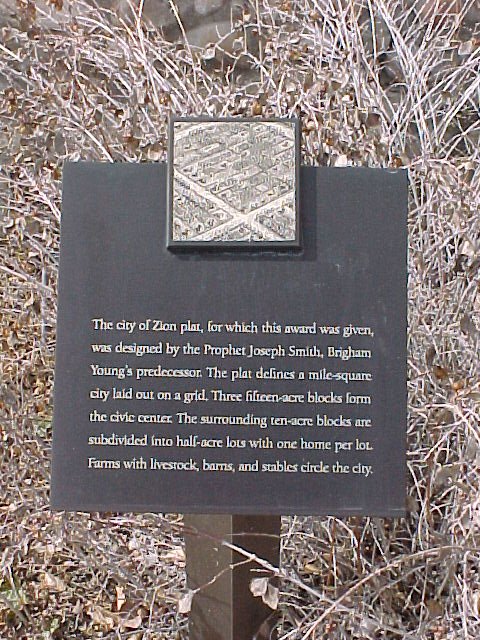
The
city of Zion plat, for which this award was given, was designed by the
Prophet Joseph Smith, Brigham Young's predecessor. The plat defines a
mile-square city laid out on a grid. Three fifteen-acre blocks form the
civic center. The surrounding ten-acre blocks are subdivided into
half-acre lots with one home per lot. Farms with livestock, barns, and
stables circle the city. |

THE AMERICAN INSTITUTE OF CERTIFIED PLANNER
Shas designated
THE PLAT OF THE CITY OF ZION
as a
NATIONAL HISTORIC PLANNING LANDMARK
The 'Plat of the City of Zion,' incorporated in a remarkable
treatise on urban design addressed to the leadership of the
Church of Jesus Christ of Latter-day Saints by Joseph Smith on
June 25, 1833, guided the development of over 500 settlements in
the Intermountain West, establishing a continuing commitment to
the building of well-planned and culturally nurturing cities.
Erected 1996
The American Institute of Certified Planners
The Society for American City and Regional Planning History
The Utah Chapter, American Planning Association |
|
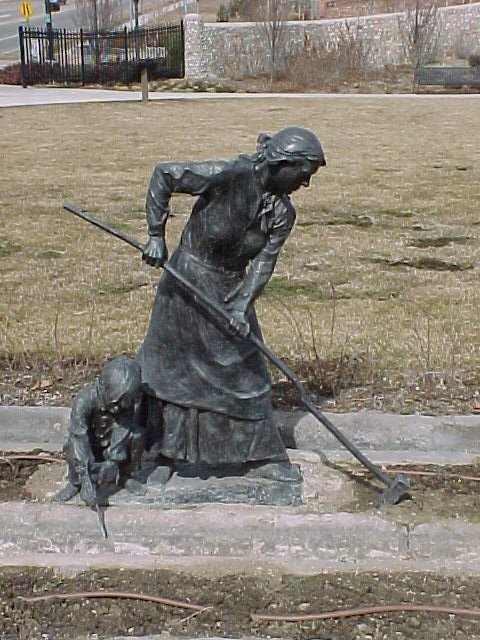
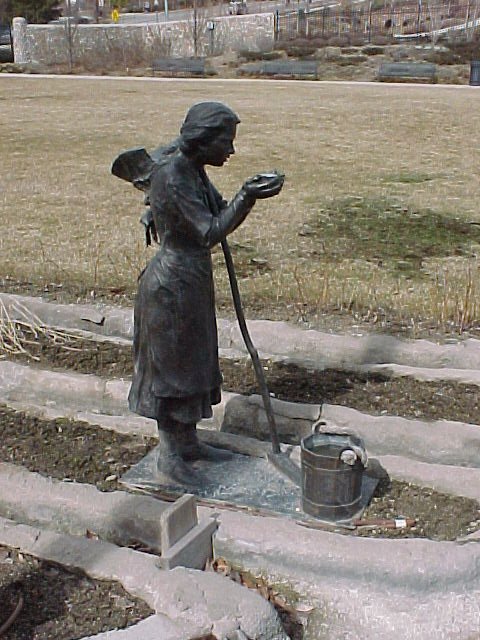
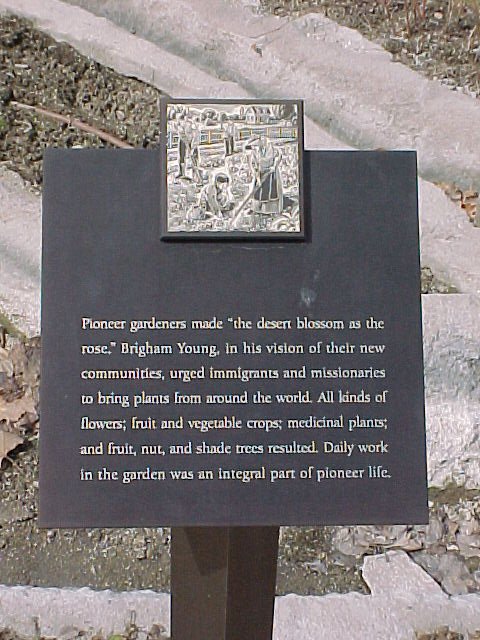
Pioneer
gardeners made "the desert blossom as the rose." Brigham Young, in his
vision of their new communities, urged immigrants and missionaries to
bring plants from around the world.
All kinds of flowers; fruit and
vegetable crops; medicinal plants; and fruit, nut, and shade trees
resulted. Daily work in the garden was an integral part of pioneer
life.
|
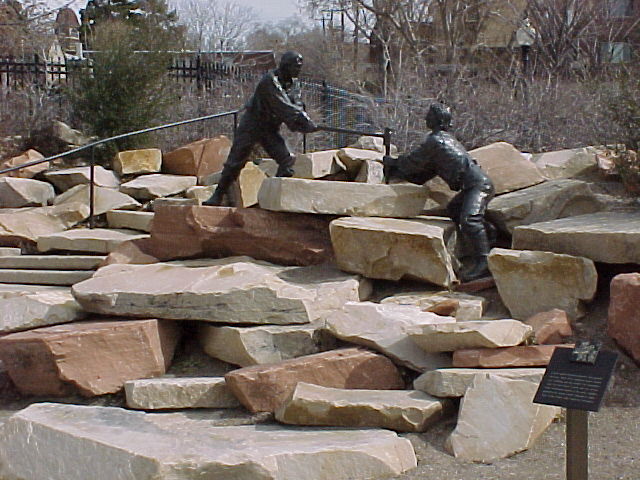
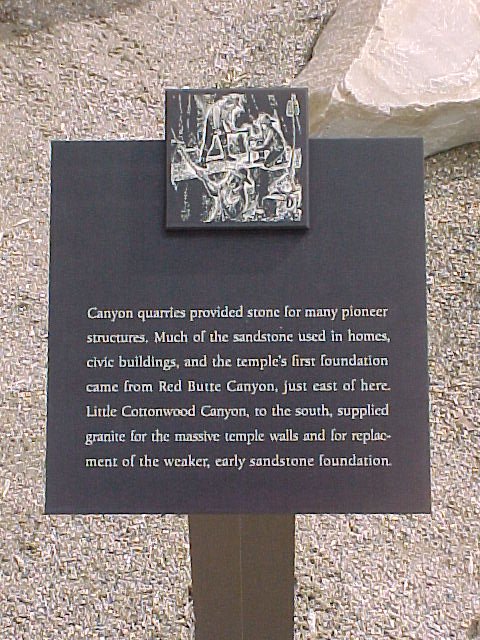
Canyon
quarries provided stone for may pioneer structures. Much of the
sandstone used in homes, civic buildings, and the temple's first
foundation came from Red Butte Canyon, just east of here.
Little Cottonwood Canyon, to the south, supplied granite for the massive
temple walls and for replacement of the weaker, early sandstone
foundation.
|

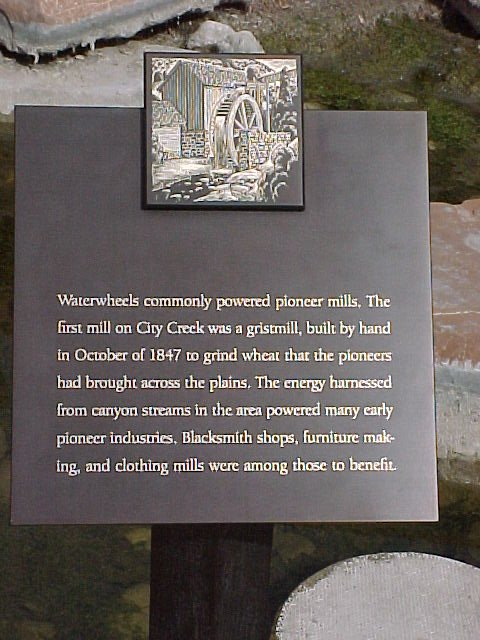
Waterwheels
commonly powered pioneer mills. The first mill on City Creek was a
gristmill, built by hand in October of 1847 to grind wheat that the
pioneers had brought across the plains.
The energy harnessed from
canyon streams in the area powered many early pioneer industries.
Blacksmith shops, furniture making, and clothing mills were among those
to benefit.
|
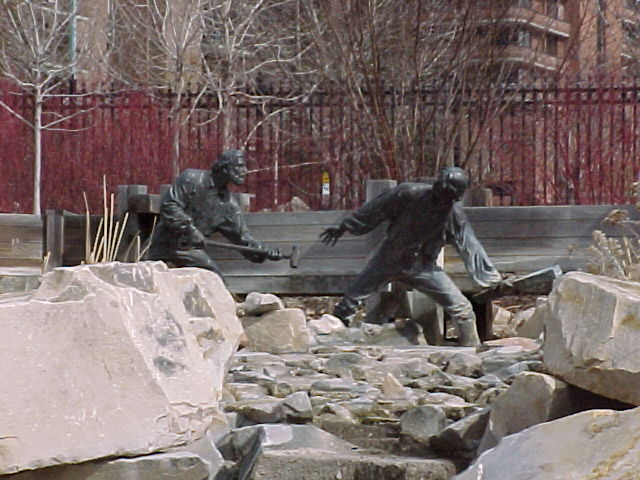 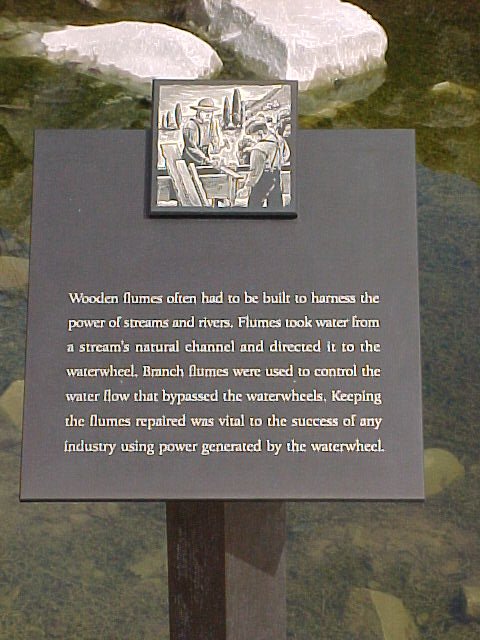
Wooden
flumes often had to be built to harness the power of streams and
rivers. Flumes took water from a stream's natural channel and directed
it to the waterwheel. Branch flumes
were used to control the water flow
that bypassed the waterwheels. Keeping the flumes repaired was vital to
the success of any industry using power generated by the waterwheel.
|
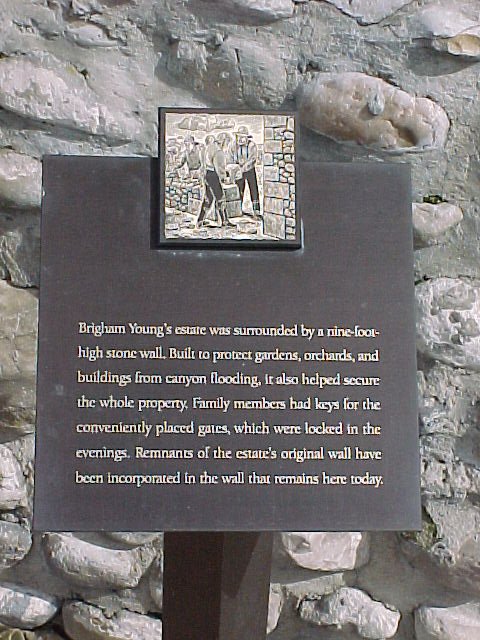
Brigham Young's
estate was surrounded by a nine-foot-high stone wall. Built to protect
gardens, orchards, and buildings from canyon flooding, it also helped
secure the whole property. Family members had keys for the conveniently
placed gates, which were locked in the evenings. Remnants of the
estate's original wall have been incorporated in the wall that remains
here today. |













